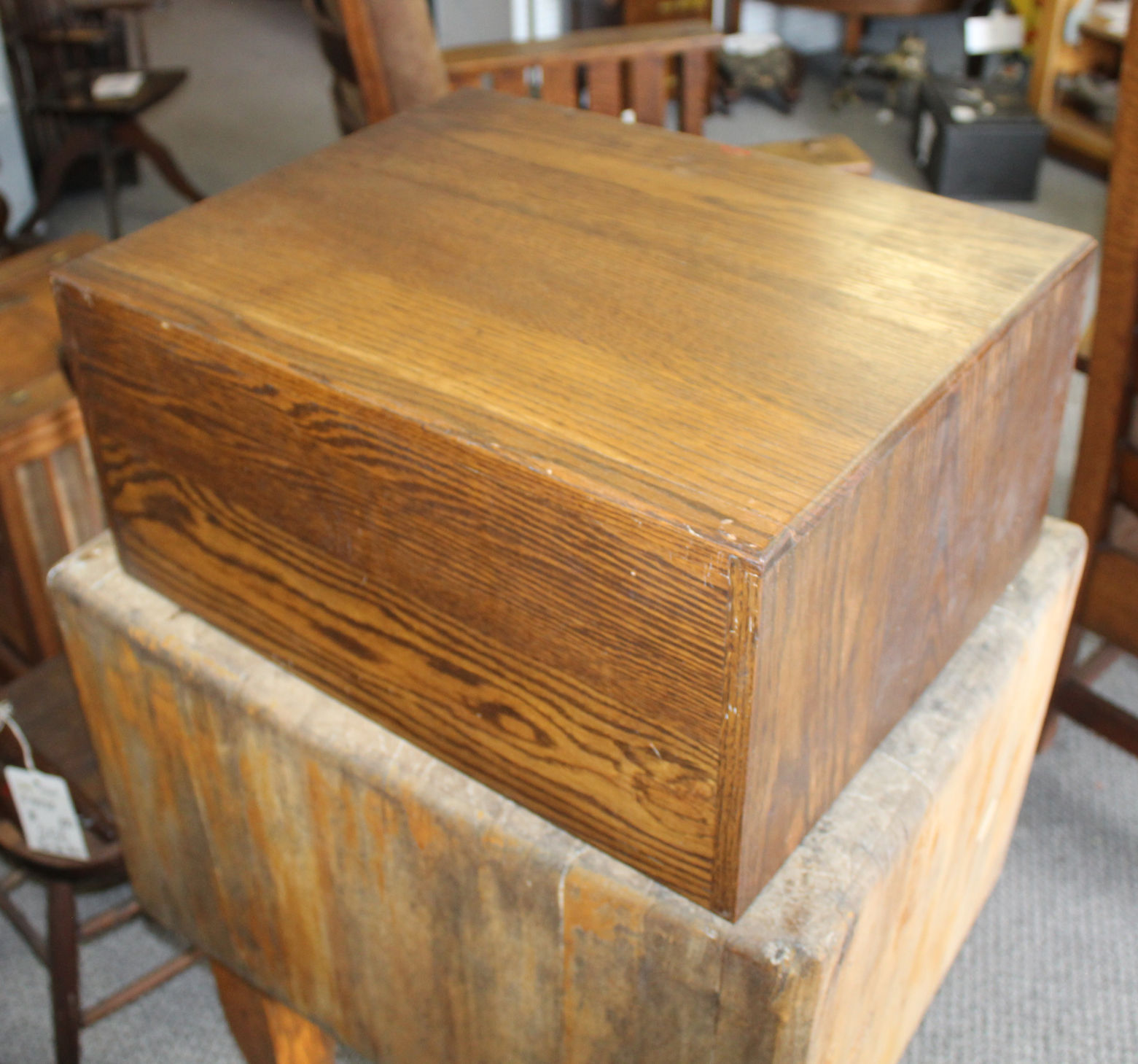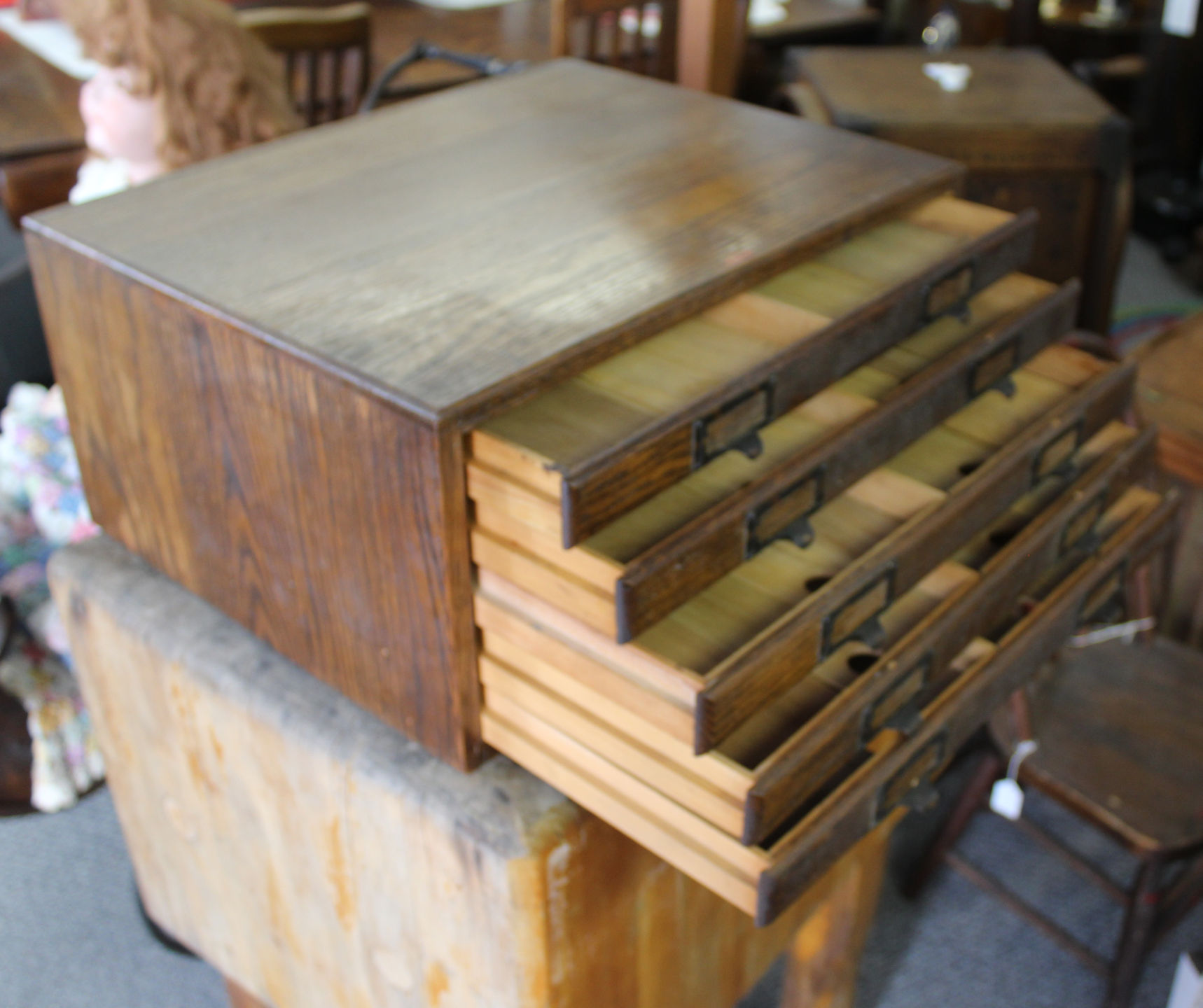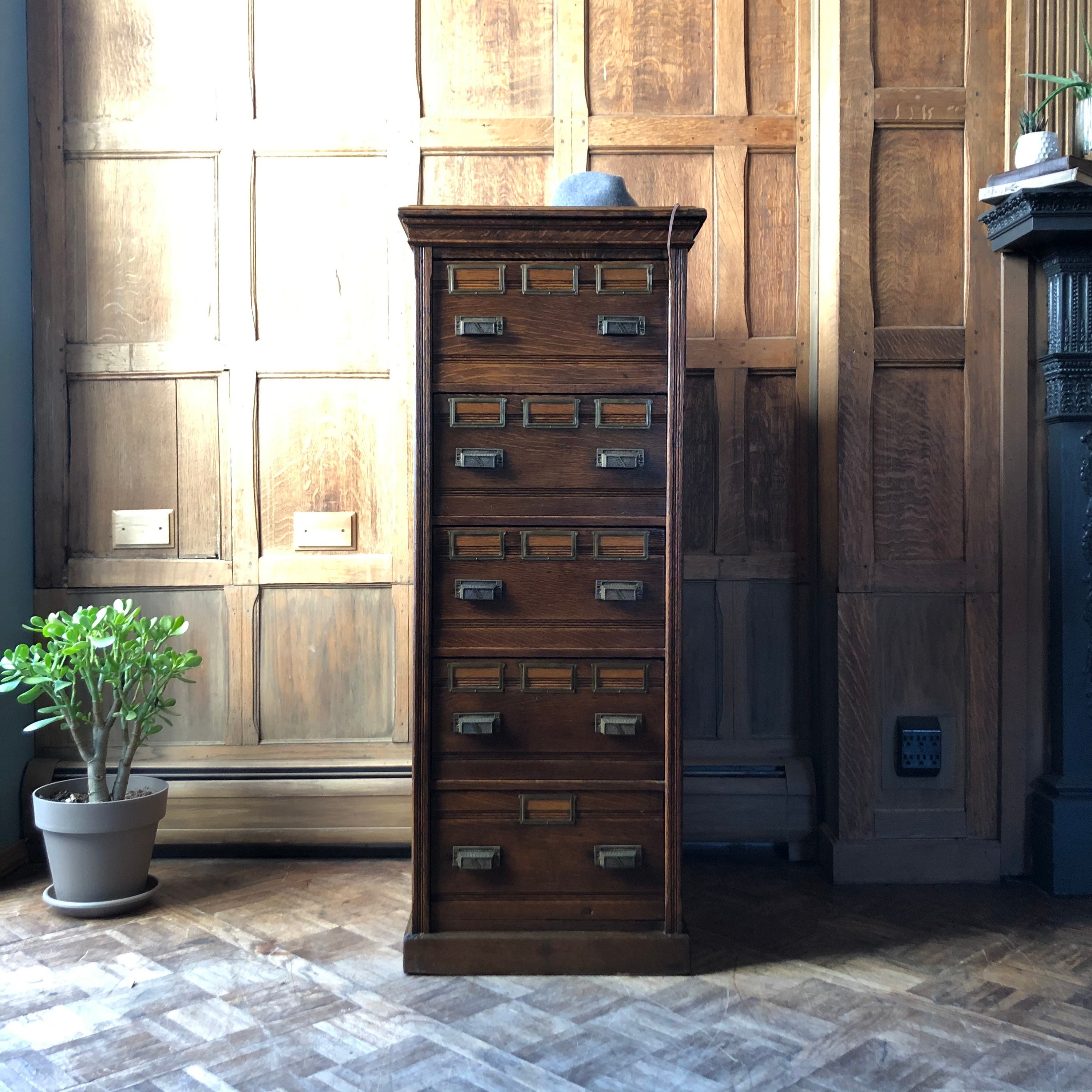Historical Context of Antique Oak File Cabinets

The rise of the modern office in the late 19th and early 20th centuries fueled a demand for efficient and aesthetically pleasing storage solutions. The sturdy, readily available, and aesthetically versatile nature of oak wood made it the material of choice for many file cabinets during this period, resulting in a diverse range of designs reflecting prevailing stylistic trends. These cabinets, now considered antiques, offer a fascinating glimpse into the evolution of both office design and woodworking techniques.
Evolution of File Cabinet Design and Oak Wood Usage
The late 19th century saw the emergence of relatively simple, utilitarian file cabinets, often constructed from various hardwoods including oak. These early designs prioritized functionality over elaborate ornamentation. As the 20th century progressed, design aesthetics evolved, incorporating stylistic elements from various movements like Victorian, Arts & Crafts, and Art Deco. Oak remained a popular choice, its strength and grain lending itself to both ornate and minimalist designs. The increasing availability of mass-produced metal components, particularly in the mid-20th century, led to some hybrid designs incorporating metal drawers within oak frames. However, solid oak file cabinets remained highly sought after for their perceived durability and inherent beauty.
Manufacturing Processes and Techniques
Antique oak file cabinets were meticulously crafted using traditional woodworking techniques. Joinery methods frequently employed included mortise and tenon joints, dovetail joints, and dowel joints, ensuring robust construction. These joints, often unseen, speak to the high level of craftsmanship involved. The wood itself was carefully selected and prepared, often employing techniques like planing, shaping, and sanding to achieve a smooth, even surface. Finishes varied, with common choices including varnish, shellac, and lacquer, each offering a unique sheen and level of protection. The application of these finishes, often multiple coats, was a crucial step in preserving the wood and enhancing its natural beauty. Some cabinets also feature hand-painted or inlaid decorative elements.
Stylistic Comparisons Across Decades
The stylistic variations in antique oak file cabinets across different decades reflect the broader shifts in design preferences.
| Decade | Style Characteristics | Common Features | Notable Manufacturers (Examples) |
|---|---|---|---|
| 1880s-1900s (Late Victorian) | Ornate, heavy, dark finishes, often featuring elaborate carvings and inlays. | Large size, multiple drawers, heavy brass hardware. | Many smaller regional manufacturers; specific names are often difficult to ascertain due to limited record-keeping. |
| 1900s-1920s (Arts & Crafts) | Simpler lines, emphasis on natural wood grain, often incorporating handcrafted details. | Straight lines, simpler hardware, potentially featuring exposed joinery. | (Difficult to definitively assign specific manufacturers to a specific style; many firms produced pieces in multiple styles) |
| 1920s-1930s (Art Deco) | Geometric patterns, streamlined forms, use of contrasting materials (e.g., wood and metal). | Sleek design, often featuring metal accents, potentially tapered legs. | (Similar to Arts & Crafts era, precise attribution to manufacturers is challenging) |
| 1930s-1950s (Mid-Century Modern) | Simpler, cleaner lines, often featuring lighter finishes, a move toward functionality. | Streamlined design, simpler hardware, potentially featuring metal drawer pulls. | (The transition to metal file cabinets was becoming more prevalent, making identification of specific manufacturers of all-oak pieces more difficult.) |
Value and Collectibility of Antique Oak File Cabinets

The value of an antique oak file cabinet is a complex interplay of several factors, reflecting not only its material composition and craftsmanship but also its historical significance and aesthetic appeal within the broader context of furniture design. Understanding these factors is crucial for both collectors and those seeking to appraise or sell such pieces. The market for antique furniture, and specifically antique office furniture, is dynamic and influenced by current trends and collector preferences.
Several key elements determine the monetary worth and desirability of an antique oak file cabinet. Condition, rarity, maker, and style all contribute to a cabinet’s overall value. A pristine cabinet in its original finish, with all its hardware intact, will naturally command a higher price than one showing significant wear and tear or evidence of past repairs. Rarity, often determined by the maker, design, and production run, significantly impacts value. Cabinets produced by renowned furniture makers or those featuring unique stylistic elements are particularly sought after. The style of the cabinet—whether it reflects Arts & Crafts, Mission, or another prominent design movement—further influences its desirability among collectors specializing in specific periods or aesthetics.
Factors Influencing Value
The following factors significantly impact the value of antique oak file cabinets. Their interplay creates a nuanced valuation process, making each piece unique in its market worth.
- Condition: The overall condition is paramount. Minor imperfections might be acceptable, but major damage (extensive cracking, significant water damage, or missing parts) drastically reduces value. The original finish, if preserved, adds considerable worth. A professionally restored piece can still hold value, but it will usually be less than an unrestored example in excellent original condition.
- Rarity: Limited production runs or unique design elements contribute to a cabinet’s rarity and, consequently, its value. Cabinets made by less-known manufacturers might surprisingly fetch high prices if their design is particularly unusual or aesthetically pleasing.
- Maker: The reputation of the maker significantly influences value. Cabinets from renowned furniture makers, especially those known for their high-quality oak pieces, often command premium prices. Identifying the maker through maker’s marks or stylistic analysis is a crucial aspect of appraisal.
- Style: The cabinet’s style, reflecting prevailing design trends of its era, impacts its desirability. Popular styles like Arts & Crafts or Mission often attract higher prices due to their enduring appeal among collectors.
Examples of High-Value Antique Oak File Cabinets
Several examples illustrate the high value that specific antique oak file cabinets can attain. These examples highlight the interplay of the previously discussed factors, demonstrating how condition, rarity, maker, and style combine to create exceptional value.
- Gustav Stickley File Cabinet: A file cabinet attributed to Gustav Stickley, a prominent figure in the Arts & Crafts movement, would be exceptionally valuable due to its maker and the inherent desirability of his work. The cabinet’s condition, originality, and the presence of any identifying marks would further influence its price.
- Early 20th-Century Mission Style File Cabinet: A well-preserved Mission-style file cabinet from the early 20th century, characterized by its simple, functional design and use of high-quality oak, could command a substantial price, especially if it exhibits exceptional craftsmanship and is in near-mint condition.
- Rarely Seen Manufacturer’s Design: A file cabinet produced by a lesser-known maker but featuring an unusual and aesthetically striking design could achieve unexpectedly high values, particularly if it’s in pristine condition and the design represents a unique contribution to the history of furniture design.
Restoration and Preservation Techniques, Antique oak file cabinet
The restoration and preservation of antique oak file cabinets require specialized knowledge and careful execution. The goal is to maintain the cabinet’s historical integrity while addressing any damage or deterioration. Improper restoration can significantly diminish a cabinet’s value.
- Assessment and Documentation: Begin with a thorough assessment of the cabinet’s condition, documenting all existing damage, repairs, and original features. Photography is crucial for this stage.
- Cleaning: Gently clean the cabinet’s surface using appropriate methods for the finish type. Avoid harsh chemicals or abrasive cleaners. Dusting with a soft cloth or using a vacuum with a brush attachment is often sufficient.
- Repair of Damage: Address any structural damage, such as loose joints or cracked wood, using traditional woodworking techniques. Replace missing parts with materials that closely match the original. The use of period-appropriate techniques and materials is essential for preserving the historical integrity.
- Finish Restoration: If the original finish is severely damaged, consider professional restoration. This may involve cleaning, repairing, and potentially refinishing the cabinet, always striving to maintain the original look as much as possible. Avoid stripping the original finish unless absolutely necessary.
- Hardware Restoration: Clean and repair any existing hardware. Replace missing pieces with period-appropriate reproductions if possible.
- Preservation: After restoration, implement measures to prevent future damage. This includes protecting the cabinet from excessive sunlight, humidity, and temperature fluctuations. Regular dusting and occasional polishing will help maintain the cabinet’s condition.
Modern Uses and Adaptations of Antique Oak File Cabinets

The enduring appeal of antique oak file cabinets extends beyond their historical significance; their robust construction and inherent aesthetic lend themselves beautifully to modern repurposing. These pieces, once solely functional tools of the office, now offer a wealth of creative possibilities for contemporary homes and workplaces, seamlessly blending vintage charm with modern sensibilities.
The inherent strength and character of antique oak file cabinets make them ideal canvases for modern adaptation. Their substantial build can withstand the rigors of repurposing, while their classic lines offer a timeless elegance that complements a range of design styles. This adaptability allows for creative transformation without compromising the cabinet’s original integrity.
Repurposing Antique Oak File Cabinets in Modern Settings
The versatility of an antique oak file cabinet allows for a multitude of creative applications beyond document storage. Its drawers can become repositories for linens, craft supplies, toys, or even a hidden bar. The cabinet’s top surface can serve as a writing desk, a display shelf for decorative items, or even a stylish console table in a hallway. The possibilities are limited only by imagination and the specific dimensions of the cabinet. Removing the drawers entirely can reveal a unique storage space, perhaps ideal for a small media center or a concealed pet bed.
Three Design Scenarios Incorporating Antique Oak File Cabinets
Here are three distinct scenarios illustrating the successful integration of antique oak file cabinets into contemporary interiors:
Scenario 1: Mid-Century Modern Office
Imagine a sleek, mid-century modern office space. The walls are painted a calming shade of pale gray, complemented by a charcoal gray wool rug. A mid-century modern desk, crafted from walnut, sits opposite a restored antique oak file cabinet. The cabinet’s hardware has been subtly updated with brushed nickel pulls, harmonizing with the desk’s metallic accents. The overall effect is one of sophisticated minimalism, where the antique piece anchors the space with its rich texture and timeless appeal. A simple, geometric pendant light illuminates the desk and the cabinet, further emphasizing the clean lines of the design.
Scenario 2: Rustic Farmhouse Kitchen
In a rustic farmhouse kitchen, painted in a soft, creamy white, an antique oak file cabinet takes center stage as an island-side pantry. Its drawers are neatly organized with baskets and containers holding baking supplies and everyday essentials. The cabinet’s warm oak tone contrasts beautifully with the white cabinetry and the butcher block countertop. Open shelving above the cabinet displays vintage cookbooks and ceramic jars, adding to the kitchen’s charming, lived-in feel. The overall aesthetic is one of cozy warmth and practical elegance.
Scenario 3: Industrial-Chic Living Room
An industrial-chic living room, characterized by exposed brick walls and metallic accents, benefits from the grounding presence of an antique oak file cabinet. Here, the cabinet serves as a media console, housing a flat-screen television and entertainment components. Its sturdy construction supports the weight of the electronics, while its aged patina complements the room’s raw, unfinished elements. The cabinet is paired with a distressed leather sofa and a metal coffee table, creating a cohesive and stylish blend of textures and materials. The overall effect is a balance between ruggedness and refinement.
Challenges and Rewards of Integrating Antique Oak File Cabinets into Modern Spaces
The primary challenge lies in harmonizing the antique piece with the surrounding contemporary elements. Careful consideration of color palettes, materials, and overall design style is crucial for a seamless integration.
The reward, however, is immense. An antique oak file cabinet introduces a unique character and a touch of history to a modern space, adding depth and visual interest that mass-produced furniture often lacks. It serves as a conversation starter, a testament to enduring craftsmanship, and a reminder of the past’s influence on the present.
Successfully integrating an antique oak file cabinet requires thoughtful planning and a keen eye for detail, but the resulting aesthetic payoff is well worth the effort. The piece’s unique history and inherent beauty become integral parts of the overall design narrative, adding layers of sophistication and charm.
